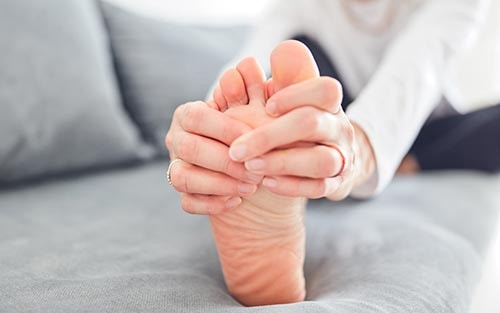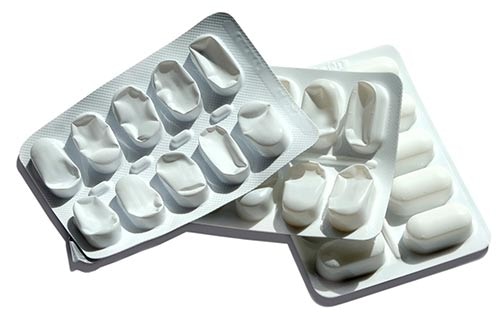Prevent sharp pain in your toes from cripplig you, or interfering with your mobility and wellbeing. Knowing what’s behind the pain in your toes and how to treat it will help you get back to your normal activities.

yourfootpalace.com gathered information on what causes sharp stinging pain in your toes, how to alleviate the pain, when you should seek medical attention, and accompanying symptoms that may be life-threatening.
Sharp Pain in Toes
Abnormal sensations, including tingling, numbness, discomfort, and sharp pain can occur in your toes when peripheral nerves are impacted or damaged. This condition can result from:
- Physical trauma resulting in nerve damage
- Diabetes (especially if left uncontrolled)
- Circulation irregularities limiting blood flow to the feet
- Autoimmune diseases (lupus, rheumatoid arthritis, Guillain-Barre syndrome, etc.)
- Trauma (vehicle accidents, sports injuries, falls, etc.)
- Alcohol
- Smoking
- Drug abuse
- Vitamin deficiencies (B vitamins, vitamin E, and niacin)
- Some prescription medications (especially ones used in cancer treatment)
- Age-related wear and tear
- Arthritis
- Tumors (malignant or benign can develop on or press against nerves)
- Chemical burns
- Exposure to extreme heat
- Exposure to poisonous substances (heavy metals and industrial chemicals)
- Poorly fitting shoes (too loose or too tight)
When peripheral nerves are affected, it may lead to a condition called peripheral neuropathy. The following are many of the signs and symptoms of this condition:
- Pain during movements and activities that should not cause pain
- Sharp, jabbing, burning, or throbbing pain
- Loss or reduction of touch sensation (feels as if you are wearing gloves or socks when you aren’t)
- The onset of a numbing or tingling sensation in the hands or feet that can spread upward in the legs and arms
- Hypersensitivity to touch
- Severe reduction of coordination and loss of sure-footedness
- Muscle weakness
Watch this video for a brief explanation of peripheral neuropathy.
Peripheral nerves can be classified into three types:
- Sensory (sensations like temperature, pain, and touch)
- Autonomic (controls internal functions like the heart rate and digestion)
- Motor (muscle movement)
Note: When peripheral neuropathy affects motor nerves, it can cause paralysis.
Toe Pain Relief
Assess what is happening with your feet before attempting a remedy. If you feel that you have sustained an injury or that your pain is too severe to manage on your own, contact your primary care physician for direction. The following will help you relieve the pain in your toes:
Apply Ice – If your skin feels warm (indicates that your foot is likely inflamed and possibly swollen), apply ice or soak your feet in an ice bath. Avoid warmth on inflamed areas; it increases the blood flow and may exacerbate the inflammation.
Apply Heat – If your skin is normal or cool to the touch, soak your feet in a warm bath. This should relax and soothe them.
Watch this video for more information about applying ice or heat to your feet.
Tip: Pharmacies and many large grocery stores sell gel packs that can be heated or frozen, then applied to your feet.
Foot Massage – Book an appointment with your masseur, explaining your condition. If you want to give yourself a foot massage, follow these steps:
- Sit on your bed or in a comfortable chair. Bend your left leg inward to rest your left foot on your right thigh.
- Pour your preferred lotion or oil into your hand. Vigorously rub the lotion or oil between your hands to warm it up, and then rub it gently over your whole foot, massaging your toes, arch, and heel.
- Use your hands to gently pull your toes back and forth or apart. This stretches the muscles, tendons, and ligaments underneath.
- Repeat the same steps on your other foot.
Tip: You can achieve a deeper massage by pressing your right knuckles into your left foot. Knead your foot like bread dough. Or reach deeper tissue and muscles by grasping your foot with both hands and applying a “sliding” pressure with your thumbs.
Follow the link to read more about How Massage Can Relieve Your Peripheral Neuropathy Pain.
Topical analgesics – These pain medications are typically sold as lotions, creams, or gels. They work by being spread on the skin, then penetrating inward to relieve pain. Some topical analgesics may contain menthol, eucalyptus oil, or turpentine oil reducing pain levels by distracting nerves with a different sensation.
Others use salicylates (the ingredient found in aspirin). Yet, others attempt to cancel out a chemical called substance P (a neurotransmitter that apparently transmits pain signals to the brain).
Oral analgesics – These medications include pain relievers, like acetaminophen (Tylenol), which relieve pain without reducing inflammation.
Tip: Strictly follow directions when using acetaminophen. Taking too much acetaminophen can cause liver complications, including failure.

Non-steroidal anti-inflammatory drugs (NSAIDs) – NSAIDs can be attained with and without a prescription (in lower doses). NSAIDs include aspirin (Bayer, Bufferin, etc.), ibuprofen (Advil, Motrin), and naproxen (Aleve). Take low dosages for a limited time solely to relieve pain. Your doctor may advise you to take a higher dose for a longer period if you have a condition that involves inflammation and pain.
Note: NSAID medications potentially have multiple side effects. Discuss any health conditions or risks with your doctor before their use.
Nerve pain medication – Pain resulting from nerve damage (neuropathy) may not respond well (or at all) to acetaminophen or NSAIDs. The following medications are commonly prescribed for neuropathy:
- Amitriptyline (Elavil)
- Gabapentin (Neurontin)
- Pregabalin (Lyrica)
Tip: Consult your physician before taking these medications, as they may include side effects like drowsiness, dizziness, and swelling. You may need to reduce or discontinue outside activities like driving or operating machinery while taking these medications.
Nerve blocks and Corticosteroids – These injectable medications work to either numb a particular nerve (nerve blocks) or to reduce inflammation to relieve pain (Corticosteroids)
When Should I Seek Medical Attention?
Seek medical care immediately if you experience any unusual tingling, weakness, or pain in your feet or hands. Obtaining an early diagnosis and treatment will offer the best chance for mitigating or arresting your symptoms and preventing any further peripheral nerve damage.
Life-Threatening Peripheral Neuropathy Symptoms
Any condition that causes you sustained pain, discomfort, or forces you to restrict your mobility should trigger you to seek medical attention. However, the following symptoms or conditions can be life-threatening and must be addressed immediately:
- Weakness, numbness, tingling, or sharp pain that spreads upward from the toes to the legs, or the fingers to the arms
- Erratic or racing heartbeat
- Extreme high or low blood pressure
- Difficulty breathing or gasping for air
- Paralysis
- Loss of coordination
Note: Save time and potentially your life by dialing 9-1-1 for emergency services. When experiencing such severe symptoms, avoid operating a vehicle or other mechanical equipment.

Disclaimer: This Content is not intended as a substitute for professional medical advice, diagnosis, or treatment. Always seek the advice of your primary care physician or other qualified health provider with any questions you may have regarding this or other medical conditions.
Toe Pain and Peripheral Neuropathy
In this article, you discovered what can cause sharp stinging pain in your toes, what you can do to ease or relieve the pain, when you should seek medical attention, and which symptoms indicate a life-threatening medical event.
Knowing how to relieve pain in your toes will help you maintain your mobility and rest easier, pain-free and recognizing when these symptoms turn deadly will undoubtedly give you a head start in preserving your life.
Ignoring the signs or the worsening of neuropathy symptoms allows nerve damage to progress. And can quickly land you in the hospital or worse.
Sources:
health.harvard.edu/feet-and-foot-care/7-ways-to-fix-foot-pain
mayoclinic.org/diseases-conditions/peripheral-neuropathy/symptoms-causes/syc-20352061
ninds.nih.gov/disorders/patient-caregiver-education/fact-sheets/peripheral-neuropathy-fact-sheet
(706) 521-5290
(678) 963-5958